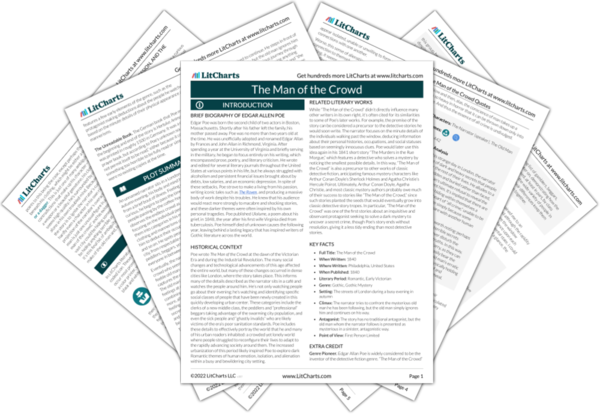The glinting object hidden in the mysterious old man’s clothing symbolizes the sense of ambiguity and uncertainty that overtakes the narrator. Although the narrator spots this shining object as he follows the old man, this detail itself doesn’t actually help him answer any of his questions about the man—rather, this clue only serves to heighten the narrator’s curiosity, as he guesses that the object is either a diamond or a dagger. This raises more questions, none of which are answered by the end of the story. If it’s a dagger, the old man might be dangerous. If it’s a diamond, he might be a thief. And, of course, it’s possible that the glinting object is something else entirely. Similar to the old man’s strange facial expressions, then, the object he’s carrying represents a fascinating but unknowable secret. The narrator assumes he can deduce facts about it through observation, but he never finds out what it is, suggesting that sometimes it’s nearly impossible to arrive at accurate conclusions about strangers, all of whom have their own hidden lives. To that end, the reader—and the narrator himself—never gets to see what, exactly, the object is. Instead, the story simply highlights the way this object makes the narrator’s mind run wild with possibilities. In turn, the object itself comes to represent the unfathomable mysteries lurking in the lives of strangers and, moreover, the human tendency to become fascinated with the other people’s secrets.
The Diamond or the Dagger Quotes in The Man of the Crowd
His clothes, generally, were filthy and ragged; but as he came, now and then, within the strong glare of a lamp, I perceived that his linen, although dirty, was of beautiful texture; and my vision deceived me, or, through a rent in a closely-buttoned and evidently second-handed roquelaire which enveloped him, I caught a glimpse of both a diamond and of a dagger.










